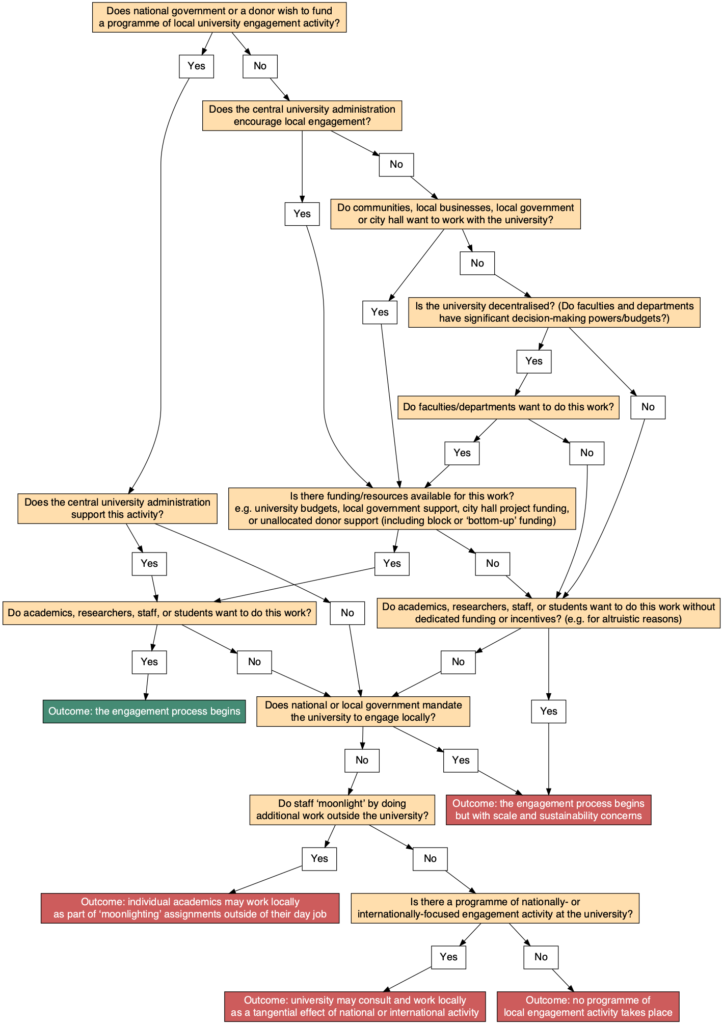James Ransom, YU Associate
Ask anyone in a university working on local growth or community engagement whether having dedicated funding for this activity makes their life easier, and you’ll nearly always be told it does. The same person may also bemoan the amount of red tape, small print and complexity involved with this funding – but the benefits of European Structural Investment Funds (ESIF), for example, outweighed the bureaucratic headaches and university engagement in ESIF grew year after year.
But what is the path to beginning a programme of local engagement work in an institution with no dedicated funding? What are the barriers and institutional hurdles that need to be overcome? And how do the broader concerns of a university facilitate or hinder this work?
The following decision tree provides a starting framework in which to consider these questions. It gives an example of the decisions and circumstances that exist before a university starts a programme of local engagement work. Individual universities may choose to skip all or part of the tree, or begin their path from a different starting point – that is, somewhere other than at the very top.

There are two key points. First, unless an institution can secure dedicated funding up front, the path to beginning a programme of work is both lengthy and complex, with numerous hurdles. Given the scale of ‘levelling up’ challenges we face, coupled with the end of European funding for local growth, this means clarification on the scope and scale of the UK Shared Prosperity Fund is essential. Second, an effective and sustainable programme requires institutional support, staff or student willingness, and appropriate resources. Eschewing any one of these three pillars hinders local engagement.
The decision tree is part of my PhD research, and has received valuable input from colleagues in Rwanda and the UK. As such, it is designed to be equally applicable to, for example, a small creative arts institution in the UK and a large multi-faculty African university. But it is also a work in progress, and feedback is very much welcome – via email, or, for the more technically-minded, by submitting a pull request in the Github repository (explanatory notes and a larger PDF of the tree are also available here).












